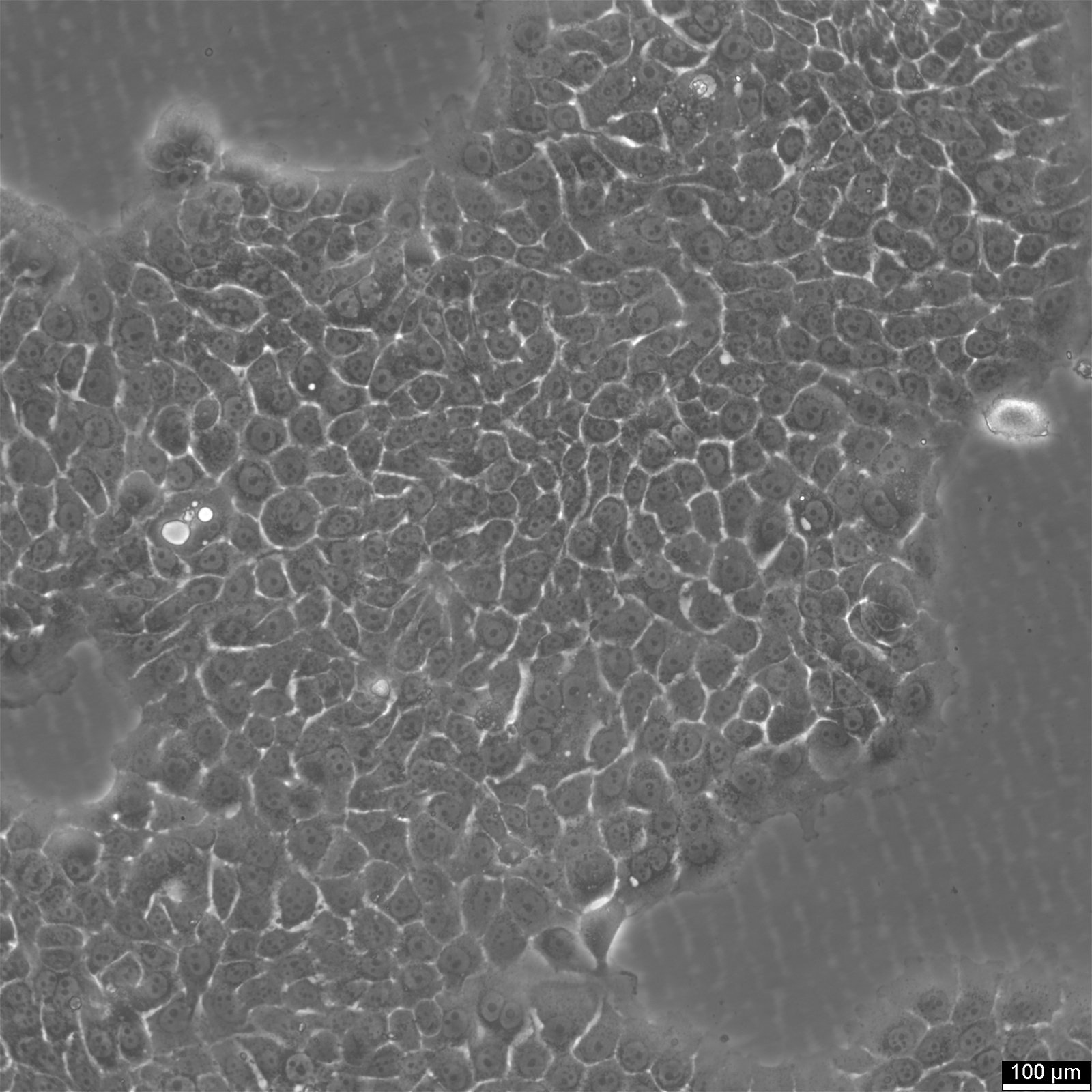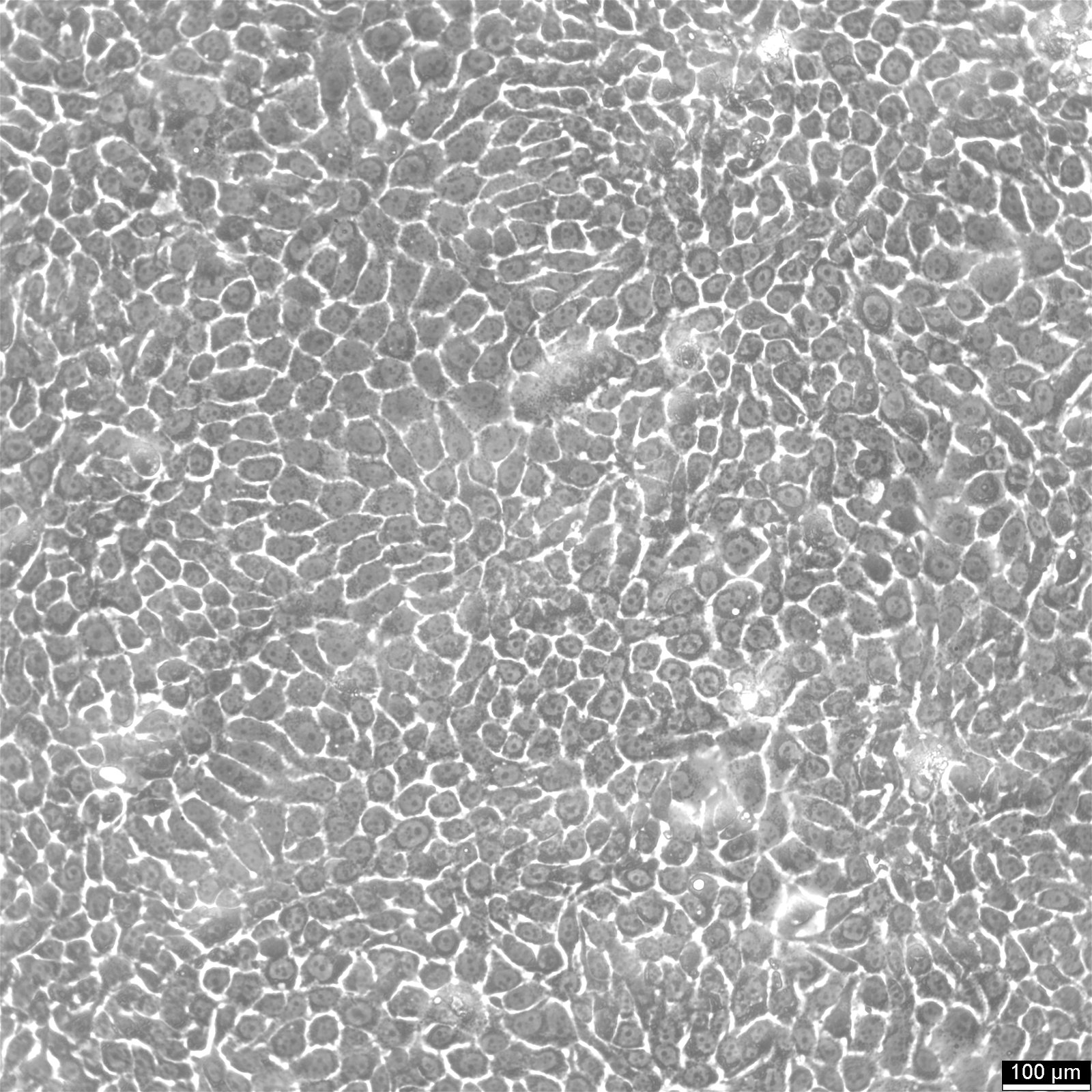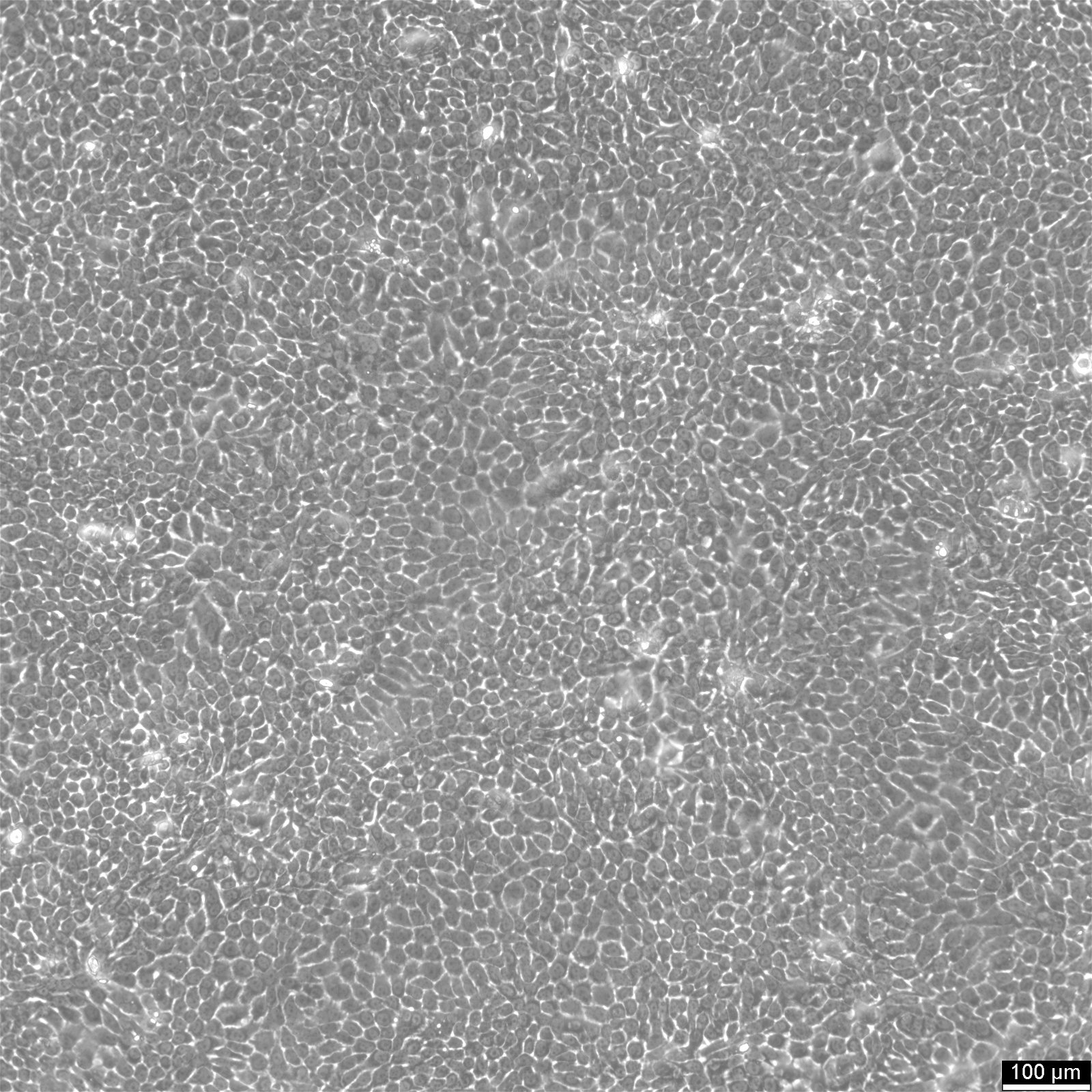BxPC-3 Cells
















Essential facts about BxPC-3 cells
| Description | BxPC-3 cells, originating from the pancreatic adenocarcinoma of a 61-year-old female patient who underwent radiation and chemotherapy, have become a fundamental asset in cancer research, particularly for studying pancreatic ductal adenocarcinoma. The absence of the SMAD4/DPC4 protein due to homozygous deletions in BxPC 3 cells makes them an invaluable resource for research into pancreatic cancer's genetic landscape. Tumors grown from BxPC-3 cells in nude mice produce carcinoembryonic antigen, human pancreas cancer-associated antigen, human pancreas-specific antigen, and traces of mucin. This highlights the ability of the cell line to closely replicate the histopathological traits of the primary tumor. The production of mucinous tissues, in particular, underscores the cell line's value for detailed pancreatic adenocarcinoma studies, reflecting the original tumor's characteristics. BxPC-3 cells' significant expression of angiogenic factors such as interleukin-8 (IL-8), vascular endothelial growth factor (VEGF), and prostaglandin E2 (PGE2) opens avenues for exploring angiogenesis in cancer progression and identifying potential therapeutic targets. In summary, the pancreatic adenocarcinoma cell line BxPC-3 are pivotal in cancer research, especially for pancreatic ductal adenocarcinoma research. Their lack of SMAD4/DPC4 protein because of homozygous deletions and their ability to replicate the primary tumor's histopathological features, including mucinous tissues, make them invaluable for studying the genetic landscape and pathology of pancreatic cancer. |
|---|---|
| Organism | Human |
| Tissue | Pancreas |
| Disease | Pancreatic ductal adenocarcinoma |
| Synonyms | BxPc-3, BxPC-3, Bx-PC3, BxPC3, BxPC3, BxPc3, Biopsy xenograft of Pancreatic Carcinoma line-3 |
Features of the pancreatic cancer cell line BxPC-3
| Age | 61 years |
|---|---|
| Gender | Female |
| Ethnicity | European |
| Morphology | Epithelial |
| Growth properties | Adherent |
Documentation
| Citation | BxPC-3 (Cytion catalog number 305031) |
|---|---|
| Biosafety level | 1 |
Genetics of the pancreatic tumor line BxPC3
| Protein expression | Mucin, Pancreas Cancer Specific Antigen(Pancreas Cancer Associated Antigen), Carcinoembryonic Antigen(Cea) |
|---|---|
| Tumorigenic | Yes |
Handling
| Culture Medium | RPMI 1640, w: 2.1 mM stable Glutamine, w: 2.0 g/L NaHCO3 (Cytion article number 820700a) |
|---|---|
| Medium supplements | Supplement the medium with 10% FBS |
| Passaging solution | Accutase |
| Subculturing | Remove the old medium from the adherent cells and wash them with PBS that lacks calcium and magnesium. For T25 flasks, use 3-5 ml of PBS, and for T75 flasks, use 5-10 ml. Then, cover the cells completely with Accutase, using 1-2 ml for T25 flasks and 2.5 ml for T75 flasks. Let the cells incubate at room temperature for 8-10 minutes to detach them. After incubation, gently mix the cells with 10 ml of medium to resuspend them, then centrifuge at 300xg for 3 minutes. Discard the supernatant, resuspend the cells in fresh medium, and transfer them into new flasks that already contain fresh medium. |
| Split ratio | 1:2 to 1:4 |
| Fluid renewal | 2 to 3 times per week |
| Freeze medium | CM-1 (Cytion catalog number 800100) or CM-ACF (Cytion catalog number 806100) |
| Handling of cryopreserved cultures |
|
Genetic profile
| Sterility | Mycoplasma contamination is excluded using both PCR-based assays and luminescence-based mycoplasma detection methods. To ensure there is no bacterial, fungal, or yeast contamination, cell cultures are subjected to daily visual inspections. |
|---|---|
| STR profile |
Amelogenin: x,x
CSF1PO: 13
D13S317: 11
D16S539: 9,11
D5S818: 11
D7S820: 10,13
TH01: 9
TPOX: 8
vWA: 14,18
D3S1358: 14,16
D21S11: 29
D18S51: 12
Penta E: 12,14
Penta D: 14
D8S1179: 13
FGA: 20,21
D6S1043: 12
D2S1338: 17,19
D12S391: 19.3,20
D19S433: 13,16.2
|
